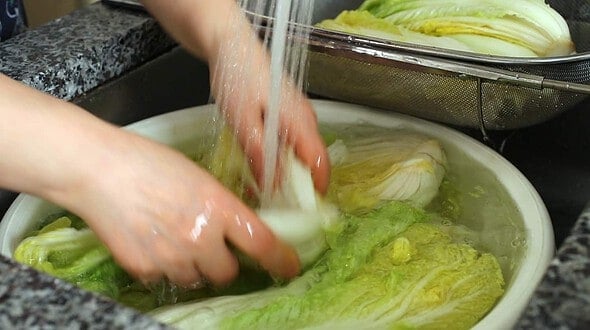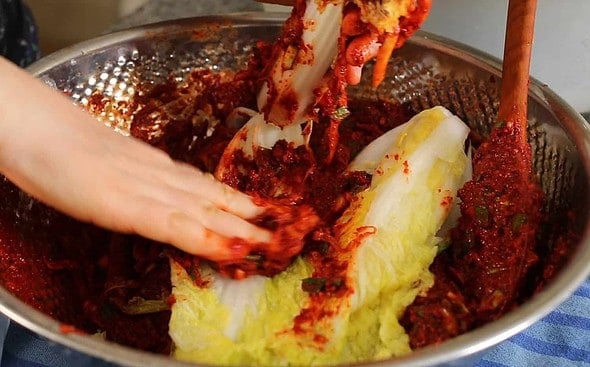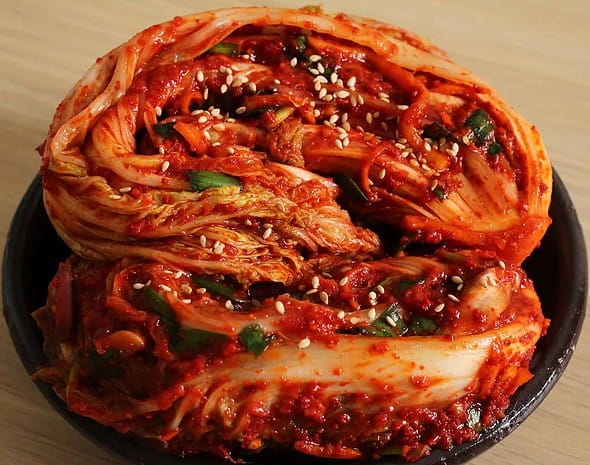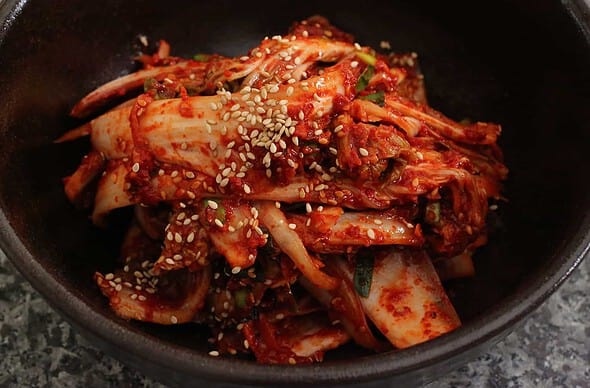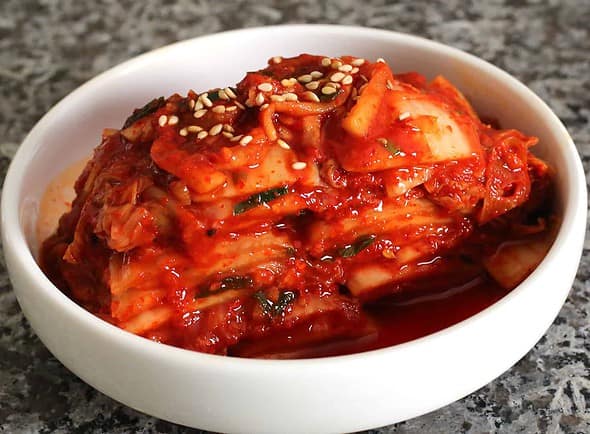用了Maangchi 的食谱做泡菜很多次,都非常的成功。
Ingredients材料:(食谱和照片源自:Maangchi)
Makes (3.6 kg) of Kimchi
3.8kg的泡菜
For salting cabbage:
- (about 2.7 kg) napa cabbage约 2.7kg的大白菜
- ½ cup Kosher salt ( 72 grams) 盐 半杯
For making porridge糯米糊:
- 2 cups water 水 2杯
- 2 tablespoons sweet rice flour (glutinous rice flour) 2大匙 糯米粉
- 2 tablespoons sugar (brown or white sugar)糖/黄糖 1大匙
Vegetables菜:
- 2 cups radish matchsticks 白萝卜 2杯 切长丝
- 1 cup carrot matchsticks红萝卜1杯 切长丝
- 7 to 8 green onions, chopped 7到 8根 青葱 (切碎,但我切长丝)
- 1 cup chopped Asian chives , optional (substitute with 3 green onions, chopped)韭菜 (随意)
- 1 cup water dropwort (minari), optional 水芹 1杯 (我没放,因为我这里找不到)
Seasonings and spices:
- ½ cup garlic cloves (24 garlic cloves), minced 1/2杯 蒜头·,切碎
- 2 teaspoon ginger, minced 2杯 碎姜
- 1 medium onion, minced 1粒 中型洋葱
- ½ cup fish sauce 1/2杯 鱼露
- ¼ cup fermented salted shrimp (saeujeot) with the salty brine, chopped 1/4 虾酱(我没放)
- 2 cups hot pepper flakes (gochugaru) 2杯 辣椒片
Directions
Prepare and salt the cabbage:
- If the cabbage cores stick out too much, trim them off.
- To split a cabbage in half without shredding the densely packed leaves inside, first cut a short slit in the base of the cabbage, enough to get a grip on either half, and then gently pull the halves apart so the cabbage splits open.
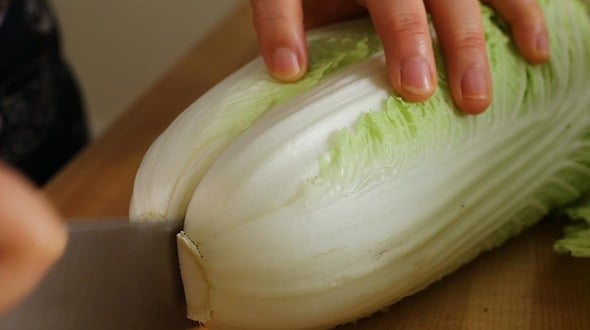
- Cut a slit through the core of each half, 2 inches above the stem. You want the cabbage leaves to be loose but still attached to the core.
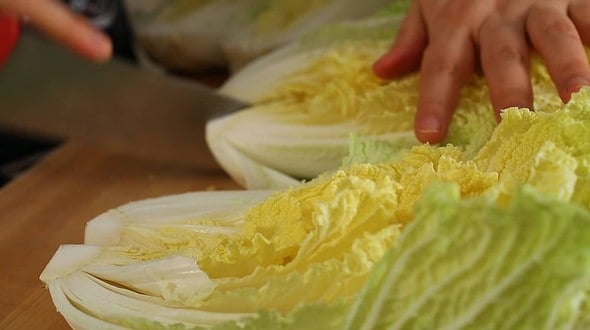
- Dunk the halves in a large basin of water to get them wet. Sprinkle the salt between the leaves by lifting up every leaf and getting salt in there. Use more salt closer to the stems, where the leaves are thicker.
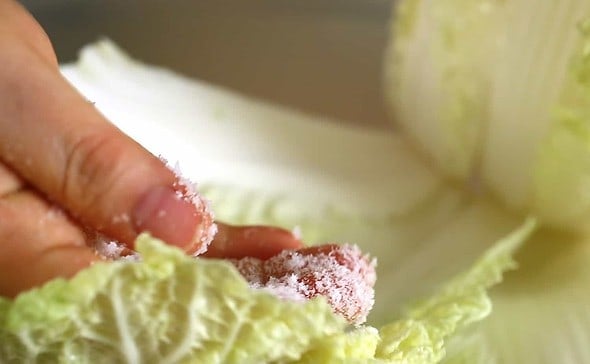
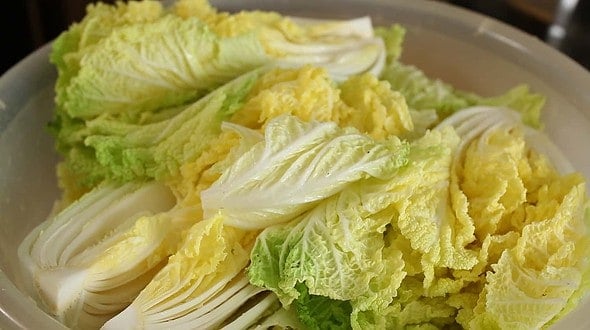
- Let the cabbages rest for 2 hours. Turn over every 30 minutes, so they get well salted. From time to time you can ladle some of the salty water from the bottom of the basin over top of the cabbages if you want to.
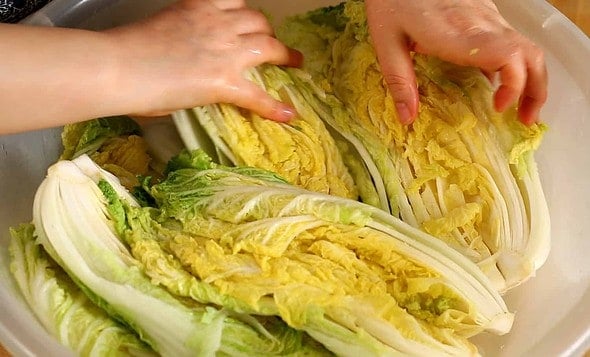
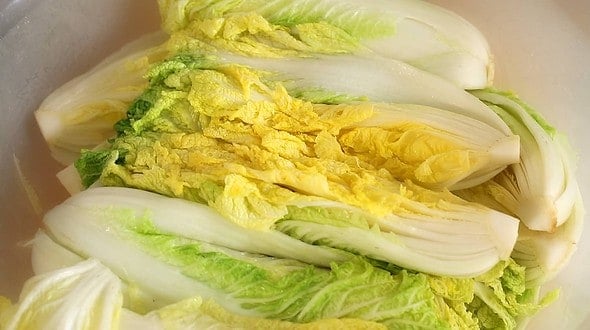
- After 2 hours, wash the cabbage halves a few times under cold running water. Giving them a good washing, to remove the salt and any dirt. As you wash, split the halves into quarters along the slits you cut into earlier. Cut off the cores, and put them in a strainer over a basin so they can drain well.
While the cabbage is salting for 2 hours, and in between the times you’re turning it over, you can make the porridge:
- Combine the water and the sweet rice flour in a small pot. Mix well with a wooden spoon and let it cook over medium heat for about 10 minutes until it starts to bubble. Add the sugar and cook 1 more minute, stirring. Remove from the heat and let it cool off completely.
- Pour cooled porridge into a large mixing bowl. Add garlic, ginger, onion, fish sauce, fermented salted shrimp, and hot pepper flakes. Mix well with the wooden spoon until the mixture turns into a thin paste.
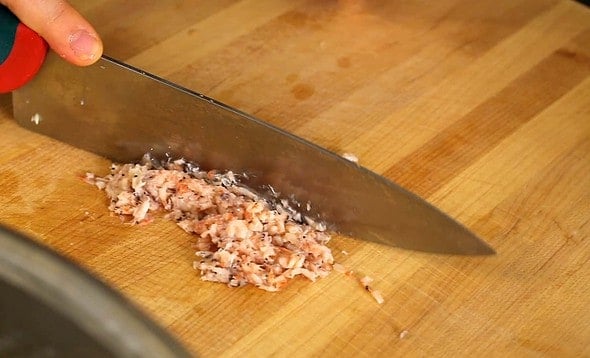
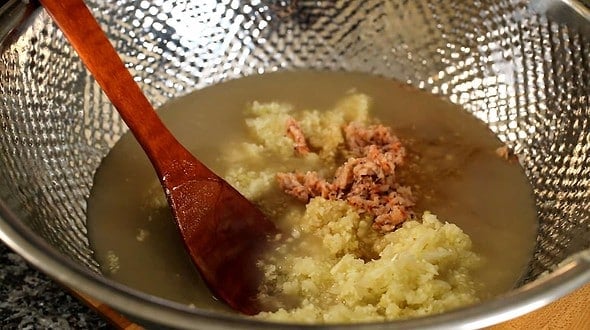
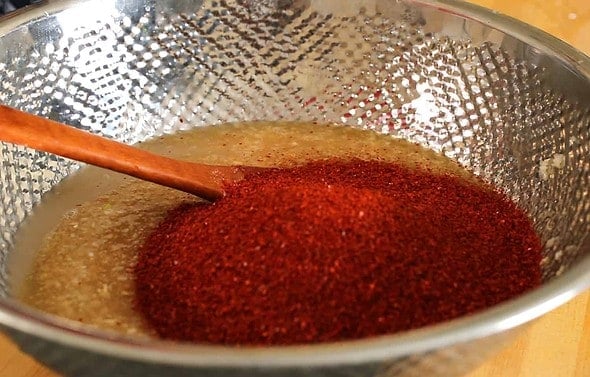
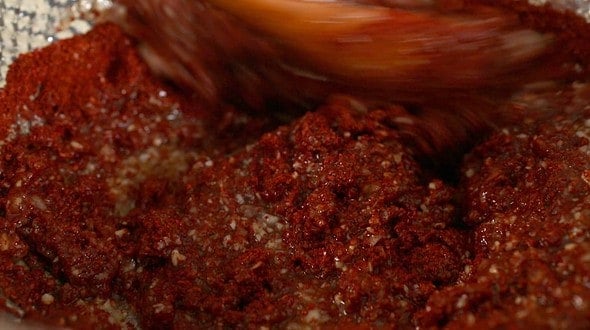
- Add the radish, carrot, and green onion, plus the Asian chives (or more green onions) and the water dropwort if you’re using them. Mix well.
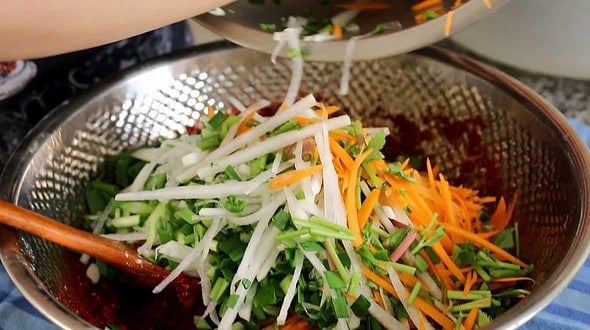
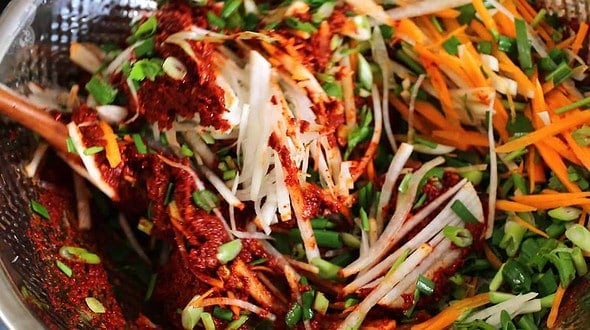
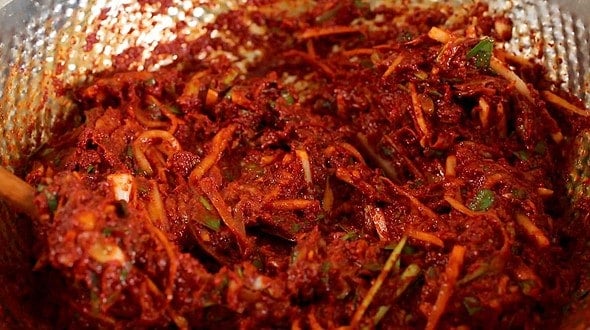
Make kimchi:
- Spread some kimchi paste on each cabbage leaf. When every leaf in a quarter is covered with paste, wrap it around itself into a small packet, and put into your jar, plastic container, or onggi.
- Eat right away, or let it sit for a few days to ferment.
On fermentation:
- The kimchi will start fermenting a day or two at room temperature, depending on the temperature and humidity of your room. The warmer and more humid it is, the faster the kimchi will ferment. Once it starts to ferment it will smell and taste sour, and pressing on the top of the kimchi with a spoon will release bubbles from beneath.
- Once it starts to fermented, store in the refrigerator to use as needed. This slows down the fermentation process, which will make the kimchi more and more sour as time goes on.


